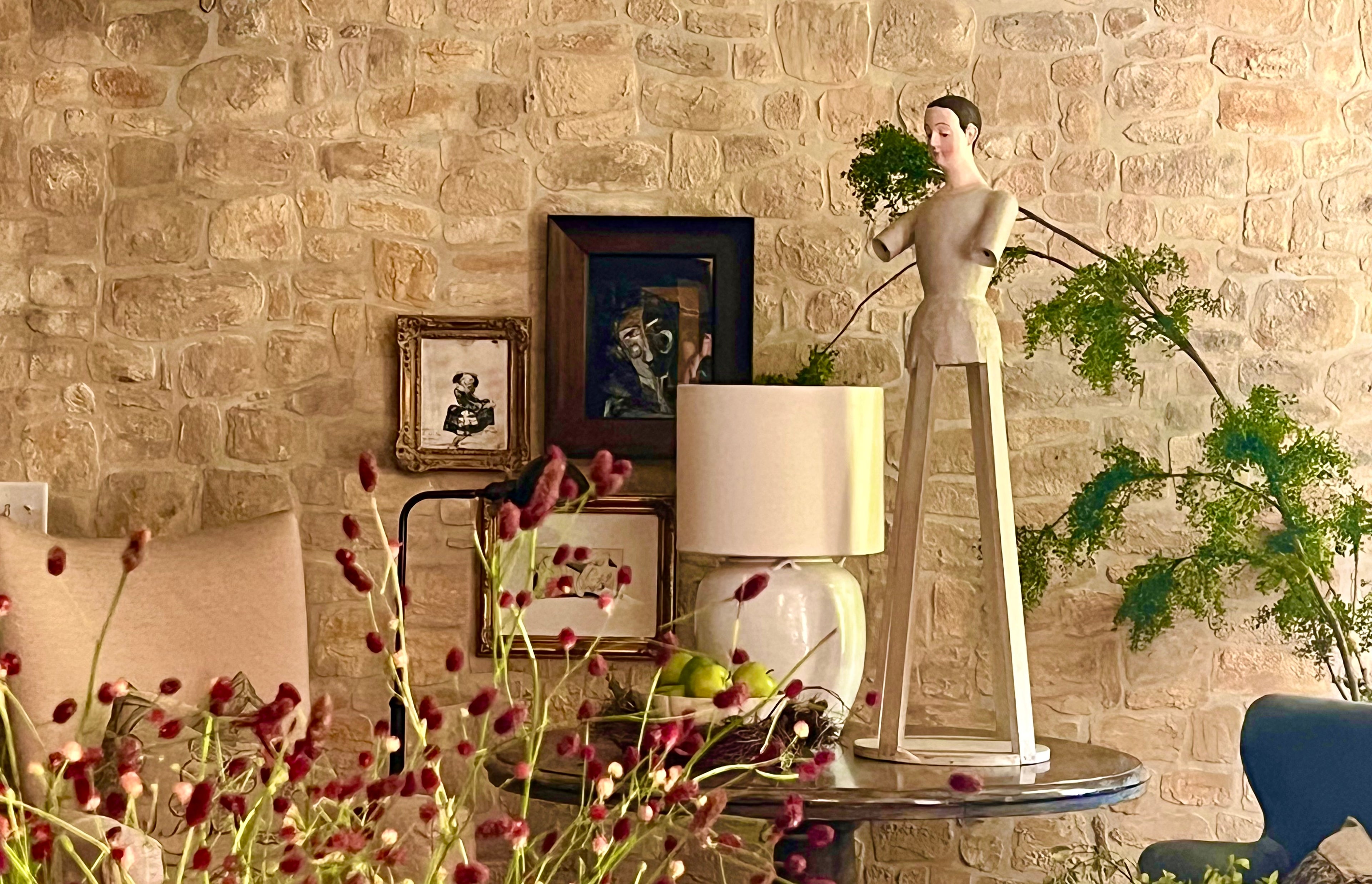How to distress wood furniture, a wet paint technique.
Share

Paint has been used for centuries, it is one of the most inexpensive ways to alter the appearance of a room or furniture. Traditional paint effects were found on houses of the aristocracy and later adopted by the rising classes. The painting effect demonstrated in this post and my video tutorial is versatile - perfect for any decorating style.
Tips
It is not necessary to buy the most expensive paint brands, but be aware that less expensive materials may not perform as expected.
It is important that you do not rush your color decision, make samples and always test your glaze for color andconsistency before you apply it to the desired piece.
Always work in a well ventilated area.
MATERIALS
- Stained, wood furniture
- water- base paint, color of your choice
- water-based glaze
- water-based, clear, satin finish
- roller, small, medium & large brushes
- blending brush
- rags
- putty knife or spatula
- 220 grit sand paper / or fine sanding block
- container and water for rinsing brushes
- blue painters tape and paper


Step One
Prepare the surface. Use blue painters tape on any areas that you don't want to get paint on. This will also help to produce a crisp, clean edge. If you are working with an existing piece of furniture that is stained already, wipe it off with a damp cloth, then sand it with a 220 grit sandpaper or a fine sanding block. Wipe clean again. If you are working with a piece of new furniture, you have two options. You can stain it first and then apply the paint on top or you can start applying the paint directly on the piece (as shown below).



Because I am going to be applying a glaze on top of the paint to distress the bookshelf, I am going to omit putting a stain on the raw wood. The glaze is going to penetrate the exposed, raw wood, making the piece look as if it had been stained to begin with.
Step two
Stir the egg-shell paint and apply an even coat of paint, allowing some of the wood to show through. You can apply the paint with a brush or a roller or a combination of both.

This is where my technique differs from others:I don't allow the paint to dry for twenty-four hours before doing a basic distressing technique.

Over the fresh, wet, painted piece of furniture use a putty knife or a spatula to remove paint in places where you want to show wear and tear. Then I let the distressed wood and paint cure. Remember, don't let the paint dry before distressing!The more you let it dry, the more difficult is going to be to distress the wood. If you are unable to finish and must go back to dry paint;you can save time and effort by using a wet sanding block to remove paint.
Wipe off the scrapped paint and lightly sand the piece all over, and wipe again. Before applying glaze. Check your piece to see if you are happy with the amount of distressing you have done or if you would like to remove more paint.

Step Three
Work in sections. Find a starting and stopping point and apply glaze with in that area, let it set for about a minute or two and wipe it off with a dry rag. With the help of a blending brush (dry brush) move the glaze up and down and side to side wiping the excess glaze from the brush on a dry cloth. This actions blends and soften the glaze. Repeat the process until you cover the whole piece. Make sure to clean the edges well in between sections before the glaze dry so you don't have any glaze and brush marks.
TIP
If you make a mistake and don't like the look of the area you are working on, wipe off the glaze with a wet cloth before it dries and start the process again.
If you want the glaze to be heavier rather than lighter, leave the glaze on longer before you wipe it off. This is a matter of taste. Normally when wiping the glaze it tends to get saturated in the corners. In order to avoid this, apply less glaze in the corners or simply stop applying the glaze before you get to the end. The places that didn't get covered with glaze can be covered by wiping with a rag. You can add more glaze at the corners with the help of a flat, artist's brush. you can also accents some areas that you want darker with a small, flat, artist's brush .


Every piece of furniture is different, in the case of this bookshelf, I worked from the inside out, leaving the front of the piece for last. For the front trim you will not have a place to stop, you will have do the front trim all at once. To make it easier glazed all the vertical shelf fronts first, wiping off the excess glaze off the horizontal trim (which you will have to do at once from top to bottom).

Let the piece dry for 6 hours or more before you do touch up. I always like to emphasize the edges by adding more glaze (darker) using the tip or the side of a flat brush. Let dry for 24 hours before putting the finish coat.
Step Four
Apply two coats of protective finish over the piece of furniture. Allow it to dry between coats. Follow the manufactures instructions.


This technique goes well with any kind of decor from a very elegant room to a relaxed room. Now that you know how to achieve the look, you can make your own distressed furniture pieces and enjoy them for many years to come.



